R (Small
Washington Tablet)
21. You could never get lost,
but you could never be absolutely sure, for it was a humanistic
cosmos of probability entanglements where the mantissa carried no
weight. And in contrast to modern 'bubbles of ideas' it was a
worldwide accepted view - because it included all of Mother Nature and
the stars above.
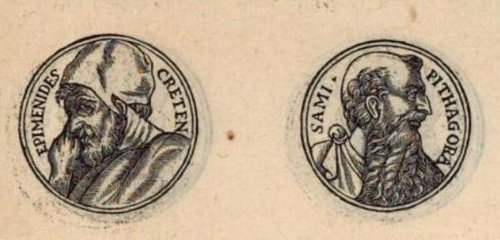
As to the comparison
between the pair of lines Ra4 and Aa8 there seems to be a hint in the
myth about
Maui fishing up Land:
... This act of Maui's, that gave our people
the land on which we live, was an event next in greatness to the
separation of the Sky and Earth ...
Thus the Separation of Heaven and Earth
must have come first. And surely it was an event which occurred up in the
domain of the Sky. Later, when Maui fished up Land it
was presumably also that an event in the upper regions.
Here we should remember the Chorti
diviners:
... On February 9 the Chorti Ah K'in,
'diviners', begin the agricultural year. Both the 260-day cycle
and the solar year are used in setting dates for religious and
agricultural ceremonies, especially when those rituals fall at
the same time in both calendars. The ceremony begins when the
diviners go to a sacred spring where they choose five stones
with the proper shape and color. These stones will mark
the five positions of the
sacred cosmogram created by the ritual.
When the stones are brought back to the
ceremonial house, two diviners start the ritual by placing the
stones on a table in a careful pattern that reproduces the
schematic of the universe. At the same time, helpers under the
table replace last year's diagram with the new one. They believe
that by placing the cosmic diagram under the base of God at the
center of the world they demonstrate that God dominates the
universe. The priests place the stones in a very particular
order.
First the stone that corresponds to the sun
in the eastern, sunrise position of summer solstice is set down;
then the stone corresponding to the western, sunset position of
the same solstice. This is followed by stones representing the
western, sunset position of the winter solstice, then its
eastern, sunrise position.
Together these four stones form a square.
They sit at the four corners of the square just as we saw in the
Creation story from the Classic period and in the Popol Vuh.
Finally, the center stone is placed to form the ancient
five-point sign modern researchers called the quincunx
...
The feet of Brutus in the daytime illustration below has been marked with quincunx signs, we
should have noticed, which presumably means his half of the year carried
days and nights - heaven and earth had been separated:
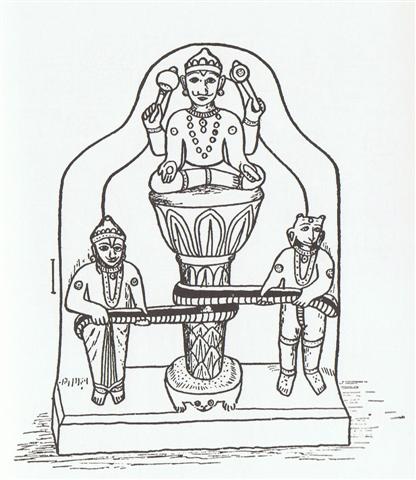
|
DEC 7 |
8 |
9 (7 * 7 * 7) |
10 (161 + 183) |
11 (345) |
12 (*266) |
 |
 |
 |
 |
 |
 |
|
Gb2-6 |
Gb2-7 |
Gb2-8 |
Gb2-9 (35) |
Gb2-10 |
Gb2-11
(266) |
|
CLOSE TO THE FULL MOON: |
|
BUNDA (Foundation) / KAKKAB
NAMMAΧ (Star of Mighty Destiny) |
θ Piscis Austrini (330.1), λ
Oct. (330.7) |
|
Al Sa'd al Su'ud-22 (Luckiest of
the Lucky) /
Emptiness-11 (Rat)
TSIN =
36 Capricorni
(325.2),
ALPHIRK (The Flock) =
β
Cephei
(325.7),
SADALSUD =
β
Aquarii,
ξ
Gruis (325.9) |
No star listed (326) |
CASTRA = ε Capricorni
(327.2),
BUNDA = ξ Aquarii
(327.5)
SIRIUS (α Canis Majoris) |
Mahar sha hi-na
Shahū-26 (Western One in the
Tail of the Goat)
NASHIRA
=
γ
Capricorni
(328.0),
ν
Oct. (328.3), AZELFAFAGE
=
π¹
Cygni,
κ
Capricorni (328.7) |
Arkat sha hi-na
Shahū-27 (Eastern One in the
Tail of the Goat)
ENIF (The Nose) =
ε
Pegasi, ERAKIS =
μ
Cephei
(329.2),
46 CAPRICORNI,
JIH (the Sun)
=
κ
Pegasi
(329.3),
ι
Piscis Austrini (329.4),
λ
Capricorni (329.6),
ν
Cephei (329.7),
DENEB ALGIEDI =
δ
Capricorni
(329.8)
*288.0 = *329.4 - *41.4 |
|
... In China, with Capricornus,
Pisces, and a part of Sagittarius, it [Aquarius]
constituted the early Serpent, or Turtle, Tien Yuen;
and later was known as Hiuen Ying, the Dark
Warrior and Hero, or Darkly Flourishing One, the
Hiuen Wu, or Hiuen Heaou, of the Han dynasty,
which Dupuis gave as Hiven Mao. It was a symbol
of the emperor Tchoun Hin, in whose reign was a
great deluge; but after the Jesuits came in it became
Paou Ping, the Precious Vase. It contained three of
the sieu, and headed the list of zodiac signs as the
Rat, which in
the far East was the ideograph for 'water', and still so
remains in the almanacs of Central Asia, Cochin China,
and Japan ...
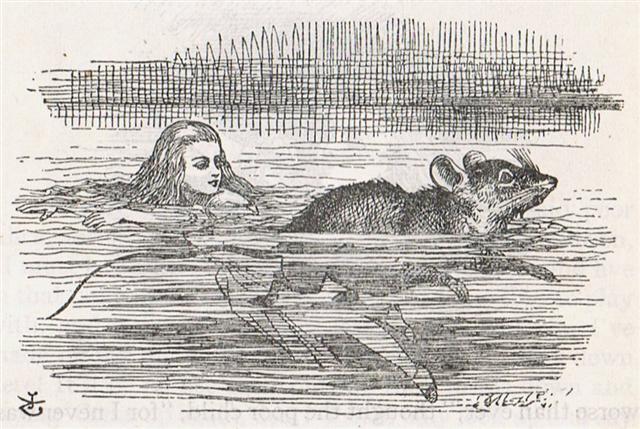 |
|
Febr 9 (40) |
10 |
(343 + 64) |
(408 = 43 + 365) |
13 |
All Hearts' Day |
|
... On
February 9 the Chorti Ah K'in,
'diviners', begin the
agricultural year. Both the
260-day cycle and the solar year
are used in setting dates for
religious and agricultural
ceremonies, especially when
those rituals fall at the same
time in both calendars. The
ceremony begins when the
diviners go to a sacred spring
where they choose five stones
with the proper shape and color.
These stones will mark the five
positions of the sacred
cosmogram created by the ritual.
When the stones are brought back
to the ceremonial house, two
diviners start the ritual by
placing the stones on a table in
a careful pattern that
reproduces the schematic of the
universe. At the same time,
helpers under the table replace
last year's diagram with the new
one. They believe that by
placing the cosmic diagram under
the base of God at the center of
the world they demonstrate that
God dominates the universe. The
priests place the stones in a
very particular order. First the
stone that corresponds to the
sun in the eastern, sunrise
position of summer solstice is
set down; then the stone
corresponding to the western,
sunset position of the same
solstice. This is followed by
stones representing the western,
sunset position of the winter
solstice, then its eastern,
sunrise position. Together these
four stones form a square. They
sit at the four corners of the
square just as we saw in the
Creation story from the Classic
period and in the Popol Vuh.
Finally, the center stone is
placed to form the ancient
five-point sign modern
researchers called the quincunx
...

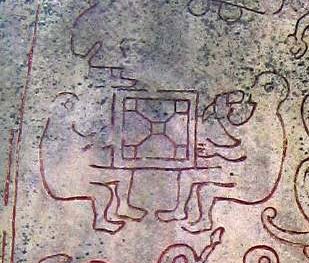
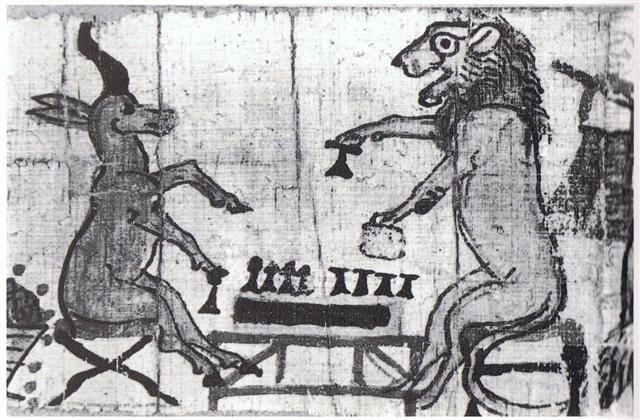 |
|
°Febr 5 |
6 |
7 |
8 (*324) |
9 |
10 (41) |
|
'Jan 13 (378) |
14 |
15 (*300) |
16 |
17 |
18 (383) |
|
"Dec 30 |
31 |
"Jan 1 |
2 |
3 (368) |
4 |
|
CLOSE TO THE SUN: |
|
JUNE 7 (*78) |
8 |
9 |
10 (161) |
11 |
12 |
|
Fibonacci: 1, 1, 2, 3, 5, 8, 13,
21, 34, 55 ... → 1.618033998 ...
= φ = (1 + √5) / 2.
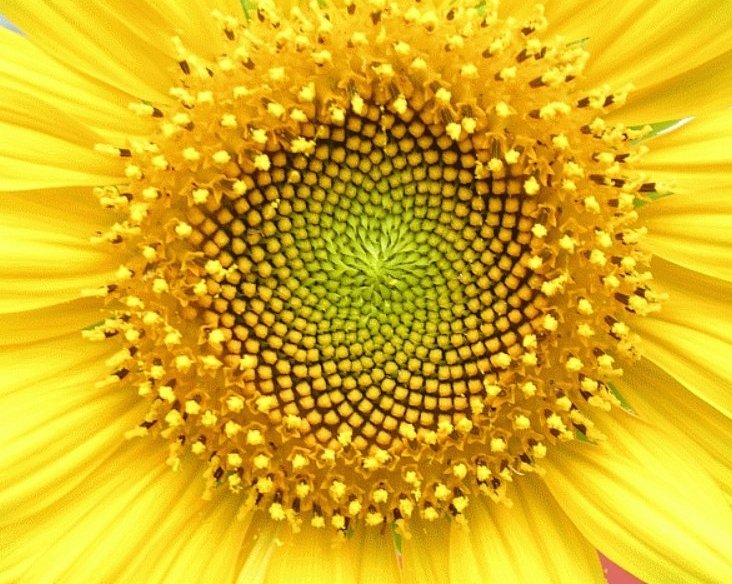 |
|
The Knot (Ukdah) |
5 Imix 9 Kumk'u
Rishu A.-13 (Head of the Lion)
ψ Leonis (146.4),
RAS ELASET AUSTRALIS = ε Leonis
(146.6)
*105.0 = *146.4 - *41.4 |
VATHORZ PRIOR = υ Carinae
(147.9) |
|
Star-25 (Horse) /
ANA-HEU-HEU-PO-5 (Pillar where
debates were held)
ALPHARD (The Horse)
=
α
Hydrae
(142.3),
ω
Leonis (142.6),
τ¹
Hydrae (142.7) |
Al Tarf-7 (The End)
ψ
Velorum (143.3),
ALTERF =
λ
Leonis,
τ²
Hydrae (143.4),
ξ
Leonis (143.5)
*102.0 = *143.4 - *41.4 |
A Hydrae
(144.1)
VEGA (α Lyrae) |
Creation of our present world
UKDAH (Knot) =
ι
Hydrae
(145.4),
κ
Hydrae (145.5),
SUBRA =
ο
Leonis
(145.8)
*104.0 = *145.4 - *41.4
ALPHEKKA MERIDIANA
April 25 AD 2025 (115)
MARS (*35) |
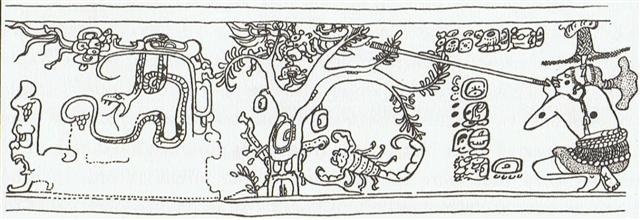 |
|
Aug 10 |
11 |
12 |
13 (*145) |
14 |
15 (227) |
|
°Aug 6 |
7 |
8 (220) |
9 |
10 |
11 (*143) |
|
'July 14 |
15 |
16 |
17 (*118) |
18 |
19 (200) |
|
"June 30 |
"July 1 |
2 |
3 (*104) |
4 |
5 (186) |
The Chorti diviners had another sacred ceremony:
... Later on in this series of rituals, the
Chorti go through a ceremony they call raising the sky.
This ritual takes place at
midnight on the twenty-fifth of April and continues each
night until the rains arrive. In this ceremony two diviners and
their wives sit on benches so that they occupy the corner
positions of the cosmic square. They take their seats in the
same order as the stones were placed, with the men on the
eastern side and the women on the west. The ritual actions of
sitting down and lifting upward are done with great precision
and care, because they are directly related to the actions done
by the gods at Creation. The people represent the gods of the
four corners and the clouds that cover the earth. As they rise
from their seats, they metaphorically lift the sky. If their
lifting motion is uneven, the rains will be irregular and
harmful ...
|
MARCH 31 (90,
455, '10) |
APRIL 1 |
|
2 (80 + 12) |
3 (93) |
 |
 |
 |
 |
|
Ga1-10 |
Ga1-11 |
Ga1-12 |
Ga1-13 ↔ 378 -
365 |
 |
 |
 |
 |
|
Gb5-22 (146
→ 2 * 73) |
Gb5-23 |
Gb5-24 (92 + 365
- 80 = 377) |
Gb5-25 (378 → Saturn) |
|
ALMAAZ (The Male Goat) = ε Aurigae
(74.7),
HAEDUS I =
ζ
Aurigae
(74.8) |
HAEDUS II = η Aurigae
(75.9)
Aug
14 AD 2024 (226, *146)
MARS & JUPITER |
5h (*76.1)
ε Leporis (76.0),
ι Tauri
(76.2),
CURSA (Footstool) = β Eridani (76.4),
λ Eridani (76.7),
Ψ (65) Eridani (76.8)
*35.0 = *76.4 - *41.4
Dec 6
AD 2022 (340, *260)
MARS |
μ Aurigae, μ Leporis (77.6) |
 |
|
June 3 |
4 (*75) |
|
5 (40 + 4 * 29) |
6 (157 ↔ 314 / 2) |
|
°May 30 (150) |
31 |
°June 1 (*72) |
2 (153) |
|
'May 7 |
8 (128) |
9 (*414 ↔ *49 +
*365) |
10 (*50 ↔ *77 -
*27) |
|
"April 23 |
24 (*399) |
25 (115 = 156 - 41) |
26 (*36 = *77 -
*41) |
|
... Later on in
this series of rituals, the Chorti go through
a ceremony they call raising the sky. This ritual
takes place at midnight on the twenty-fifth of April
and continues each night until the rains arrive. In
this ceremony two diviners and their wives sit on
benches so that they occupy the corner positions of
the cosmic square. They take their seats in the same
order as the stones were placed, with the men on the
eastern side and the women on the west. The ritual
actions of sitting down and lifting upward are done
with great precision and care, because they are
directly related to the actions done by the gods at
Creation. The people represent the gods of the four
corners and the clouds that cover the earth. As they
rise from their seats, they metaphorically lift the
sky. If their lifting motion is
uneven, the rains will be
irregular and harmful ...
Ariki
1. King, ruler, member of the nobility,
Ariki henua, king; members of the royal
family, descending from Hotu Matu'a;
noble, nobility, chief. 2. Divine being,
superior being. Ariki Paka, certain
collateral descendents of Hotu Matu'a,
who exercised religious functions. Vanaga.
Chief, king, lord, headman in general.
Hakaariki, to make one a king. P Pau., Mgv.:
ariki, chief. Mq.: aiki, id. Ta.:
arii, id. The Marquesan use both aiki
and hakaiki in the same sense; the latter
forms with Mangarevan akariki a
subordinate couple in Southeast Polynesia. Since
akariki is the only form in Mangareva and
the Marquesas have both we may regard this as
indicative of the influence of Mangareva upon
the Marquesas. In Tonga we find only eiki;
the vowel change is quite in the Tongan manner,
the dropping of the liquid is most unusual; the
eiki form appears once more in Mangarevan
ataeiki (also a language in which it is
unusual to drop the liquid) in the sense 'to do
nothing and to dress richly in a luxurious way'.
Churchill.
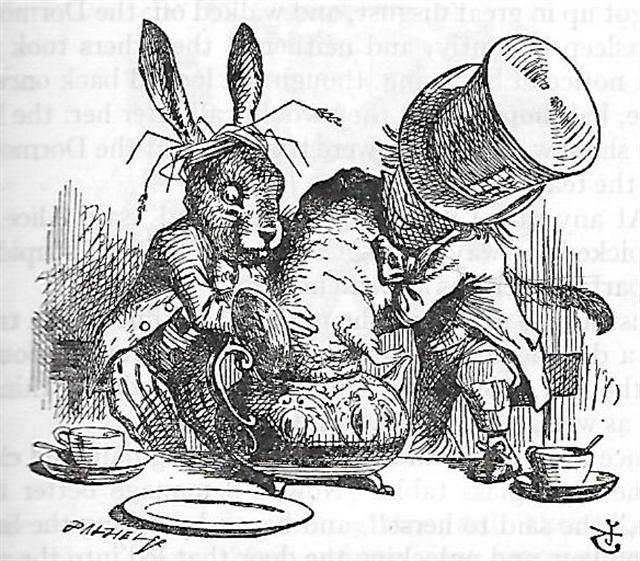
... The
Mahabharata insists on six as the
number of the Pleiades as well as of the mothers
of Skanda and gives a very broad and wild
description of the birth and the installation of
Kartikeya 'by the assembled gods ... as
their generalissimo', which is shattering,
somehow, driving home how little one understands
as yet. The least which can be said, assuredly:
Mars was 'installed' during a more or less close
conjunction of all planets; in Mbh. 9.45 (p.
133) it is stressed that the powerful gods
assembled 'all poured water upon Skanda,
even as the gods had poured water on the head of
Varuna, the lord of waters, for investing
him with dominion'. And this 'investiture' took
place at the beginning of the Krita Yuga,
the Golden Age ...
|
|
THE NAKSHATRA
VIEW: |
|
SEPT 29 |
30 (273
= 3 * 91) |
|
OCT 1 |
2 (*195) |
|
κ Ophiuchi (256.2), ζ Arae (256.5), ε Arae (256.8),
CUJAM (Club) = ε Herculi
(256.9) |
No star listed (257) |
17h (*258.7)
ARRAKIS =
μ
Draconis
(258.7) |
Mula-19 (The
Root)
SABIK (The Preceding One) =
η
Ophiuchi
(259.7),
η
Scorpii
(259.9) |
|
Dec 2 (336 ↔ 4 *
84) |
3 |
4 |
5 (*259) |
|
°Nov 28 |
29 |
30 (*254) |
°Dec 1 |
|
'Nov 5 |
6 (*230) |
7 |
8 |
|
"Oct 22 (295 =
336 - 41) |
23 |
24 |
25 (*218 → 21 * 8 = 168) |
 |
 |
 |
 |
|
Ga7-23 (192) |
Ga7-24 |
Ga7-25 |
Ga7-26 |
These ideas should be kept in mind when we are looking at line Ra4
respectively line Aa8:
 |
 |
 |
 |
 |
|
Ra4-11 |
Ra4-12 |
Ra4-13 |
Ra4-14 |
Ra4-15 |
 |
 |
 |
 |
 |
|
Ra4-16 |
Ra4-17 |
Ra4-18 |
Ra4-19 |
Ra4-20
→ May 14 |
 |
 |
 |
 |
 |
 |
|
Ra4-21 |
Ra4-22 |
Ra4-23) |
Ra4-24 |
Ra4-25 (108) |
→ |
 |
 |
 |
 |
 |
|
Aa8-55 |
Aa8-56 |
Aa8-57 |
Aa8-58 (→ 8 * 58 =
464) |
Aa8-59 |
| ki te henua - ki te
ragi |
kua heu ia - kua rere
ki te pepe |
mai tae ia ki te nuku
- honu |
kua vero ia |
ki te honu e kau te
honu |
|
Sept 21
(264) |
ZANIA (η
Virginis)
GIENAH
(γ Corvi)
Equinox |
*186 |
*4 + *183
→ *227 - *41
+ *1 |
*188
Sept 25 |
|
3 days of cold food |
|
Pepe.
1. A sketch. 2. Bench, chair, couch, seat,
sofa, saddle; here pepe, mau pepe, to
saddle; noho pepe, a tabouret. Pepepepe,
bedstead. 3. Pau.: butterfly. Ta.: pepe, id. Mq.:
pepe, id. Sa.: pepe, id. Ma.: pepe,
a moth; pepererau, fin, Mgv.: pererau,
wing. Ta.: pereraru, id. Ma.: parirau,
id. Harepepe, kelp. Here pepe, to saddle.
Churchill. Sa.: pepe, a butterfly, a moth, to
flutter about. Nukuoro, Fu., Niuē,
Uvea, Fotuna, Nuguria, Ta., Mq.: pepe,
a butterfly. Ma.: pepe,
a grup, a moth; pepepepe,
a butterfly; pepeatua,
a species of butterfly. To.: bebe,
a butterfly. Vi.: mbèbè,
a butterfly. Rotumā: pep,
id. Churchill 2. Mq.: Pepepepe, low, flat.
Ha.: pepepe, id. Churchill. Kau.
To move one's feet (walking or swimming).
Vero
To throw, to hurl (a lance, a spear). This word was also
used with the particle kua preposed: koía kua
vero i te matá, he is the one who threw the obsidian
[weapon]. Verovero, to throw, to hurl repeatedly,
quickly (iterative of vero). Vanaga. 1. Arrow,
dart, harpoon, lance, spear, nail, to lacerate, to
transpierce (veo). P Mgv.: vero, to dart,
to throw a lance, the tail; verovero, ray, beam,
tentacle. Mq.: veó, dart, lance, harpoon, tail,
horn. Ta.: vero, dart, lance. 2. To turn over
face down. 3. Ta.: verovero, to twinkle like the
stars. Ha.: welowelo, the light of a firebrand
thrown into the air. 4. Mq.: veo, tenth month of
the lunar year. Ha.: welo, a month (about April).
Churchill. Sa.: velo, to cast a spear or dart, to
spear. To.: velo, to dart. Fu.: velo,
velosi, to lance. Uvea: velo, to cast;
impulse, incitement. Niuē:
velo, to
throw a spear or dart. Ma.: wero,
to stab, to pierce, to spear. Ta.: vero,
to dart or throw a spear. Mg.: vero,
to pierce, to lance. Mgv.: vero,
to lance, to throw a spear. Mq.: veo,
to lance, to throw a spear. Churchill 2. |
 |
 |
 |
 |
 |
 |
|
Aa8-60 |
Aa8-61 (1310) |
Aa8-62 |
Aa8-63 |
Aa8-64 |
Aa8-65 (1314) |
| e kua noho ma to ihe -
eko te honu |
nuku |
ma te mahora |
kua honu ia |
kua mata hihi rarua
mai |
ki te honu |
|
*189 |
Sept 27
(270)
*190 |
PORRIMA (γ) |
*192 |
*193 |
Oct 1 (274)
→
354 - 80 |
|
Mahora. Mgv.: to spread, to
stretch out, level. Ta.: mahora, to be spread
out, level. Mq.: mahoa, to spread out, to
display, level. Sa.: mafola, to be spread out.
Ma.: mahora, id. Churchill.
Nuku. 1. Pau.:
nuka, crowd, throng. Ta.: nuú, army,
fleet. Mg.: nuku, a host, army. 2. Mgv.: nuku,
land, country, place. Sa.: nu'u, district,
territory, island. Churchill |
And then we can guess the figure in Aa8-66 might have
alluded to Maui fishing up land:
-2.jpg)
|
 |
 |
 |
|
Aa8-66 |
Aa8-67 |
Aa8-68 |
|
kua mau te manu - i
to ika |
kua noho i te henua -
i te ragi |
ma to ua |
|
Ua.
1. Cause, reason why something happens or is done; he ûa te
ua, au i-ta'e-iri-ai ki tooku hare, because of the rain, I
did not go home; ua kore, without cause, without reason.
2. Ceremononial stave
with a human face carved at one extremity. Vanaga. Cfr toko.
1. A long club T. 2. Mgv.: ua, the genitalia. Ta.: hua,
id. Mq.: hua, id. Ha.: hua, testicles. 3. Ta.:
ua, the back of the neck. Ma.: ua, id. Sa.: ua,
the neck. 4. Ta.: ua, a land crab which shears iron. Ma.:
uka, lobster. Sa.: uga, the hermit crab.
Churchill. Ûa. Rain;
1. ûa hakamito, persistent, but not strong, rain; 2.
ûa kura, fine rain, drizzle; 3. ûa matavaravara,
strong rain; 4. ûa parera, torrential rain; 5. ûa tai,
rain followed by fair weather at sea. Ehu ûa,
drizzle. Vanaga. Ûaûa.
Tendons, muscles. 1. Hau ûaûa kio'e, line made
from rats' tendons. 2. Ûaûa toto, vein, artery. 3.
Ûaûa piki, spasm. Vanaga. 1. Rain; hoa mai te ua, to
rain; mou te ua, to cease raining. P Mgv., Mq., Ta.:
ua, rain. 2. Vein, artery, tendon (huahua
1) (uha G);
ua nene,
pulse; ua nohototo,
artery, ua gaei,
pulse. Uaua, vein,
tendon, line; kiko uaua,
muscle T. Hakauaua,
to mark with lines. P Pau.:
tare-ua, tendon. Mgv., Mq., Ta.:
uaua, vein, tendon.
Churchill. U'a. Of
the tide, to reach its maximum; tai u'a, high tide.
Vanaga. Wave, surge; tai ua, high tide. Churchill.
Uá. Ata uá, morning
twilight. Uáuá,
to reside; resident; noho uáuá to settle somewhere;
ina koe ekó noho uáuá, do not establish yourself there.
Vanaga. |
|
Oct 2 (275,
*195) |
Oct 3 |
Oct 4 (*197) |
|
"Aug 22
(234, *154) |
"Aug 23 (276
- 41 = 235) |
"Aug 24 (236
↔ 8 * 29½) |
|
"Febr 21
(*336, 416, 51) |
"Febr 22
(235 - 182 = 53) |
"Febr 23
(54 ↔ 2 * 27 ↔ π) |
|
... The ordinary year in the previous
Roman calendar consisted of 12 months, for a total of
355 days. In addition, a 27-day intercalary month, the
Mensis Intercalaris, was sometimes inserted
between February and March. This intercalary month was
formed by inserting 22 days after the first 23 or 24
days of February; the last five days of February, which
counted down toward the start of March, became the last
five days of Intercalaris. The net effect was to add 22
or 23 days to the year, forming an intercalary year of
377 or 378 days ...
... The leap day was introduced as part
of the Julian reform. The day following the Terminalia
(February 23) was doubled, forming the 'bis sextum
- literally 'double sixth', since February 24 was 'the
sixth day before the Kalends of March' using Roman
inclusive counting (March 1 was the 'first day').
Although exceptions exist, the first day of the bis
sextum (February 24) was usually regarded as the
intercalated or 'bissextile' day since the third
century. February 29 came to be regarded as the leap day
when the Roman system of numbering days was replaced by
sequential numbering in the late Middle Ages ... |
|
April 2 (92
= 51 + 41, *12, 457, *377) |
April 3
(*13, 458 - 80 = *378)
→ 4-13 → 413
(→ 14 * 29½) - (365 - 355)
→ SATURN |
April 4
(*14 = *197 - *183) |
|
Dec 6 (340
↔
275 + 65)
→
POLARIS |
Dec 7 (341,
*261 → 9 * 29)
→
ALRISHA |
342 →
18 * 19) + 3 = Dec 11
→
(HAMAL) |
Which in turn could be reason for coordinating Aa8-68 with the 2nd Chorti ceremony, because it
was coinciding with
the beginning of a season of rain - to ua. And by adding a
week (a wake) to day 54 ("Februay 23, Terminalia) we should
ideally reach day 61 ("March 1). They had counted 6 days
from "February 24 (→ 2-24 → 224) to
the
Kalends of March ("March 1).
We should here remember te ua preceding the Pleiades star
cluster, presumably
referring to the current time era:
This glyph (number 420 = 7* 60 = 6* 70) probably indentified
where the rains ideally should have been stopped, because the ua sign
is here reversed:
|
 |
 |
|
ua |
May 14 |
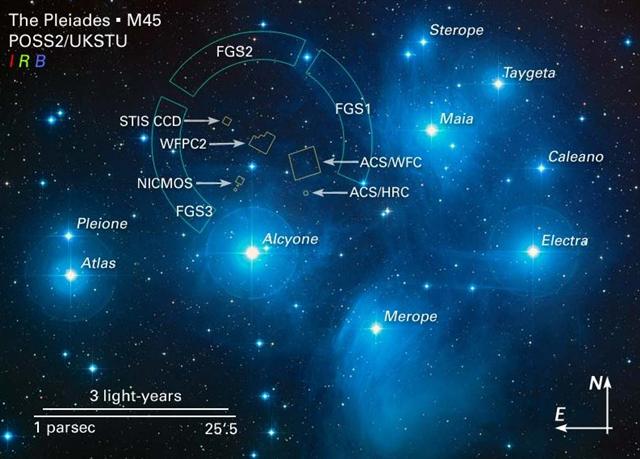
|
Separation
of Heaven and Earth |
Febr 14 (45,
410, *330) |
|
Raising
the Sky |
April
25 (115, 480, *400) |
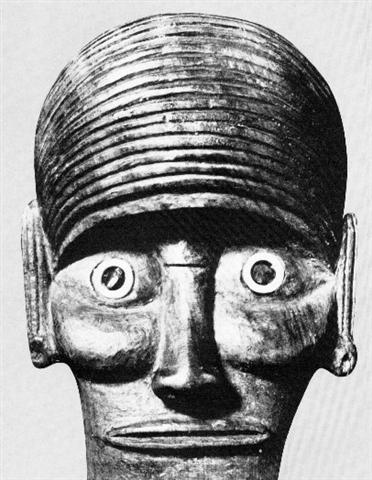

|
End of
Spring |
May 15
(135, 500, *420) |
|
Maui
Fishing Up Land |
June 29
(180, 545, *465) |
When Maui struggled with the great Tonga Nui fish his maro
(loin-cloth) came off, which means it should have happenied in the
month of Maro = June .

|



























-2.jpg)





